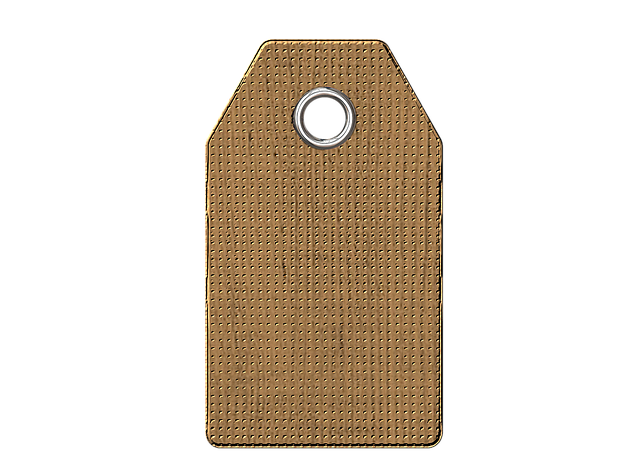Skin tags, caused by friction, weight, or genetics, can be removed at home via non-surgical methods like over-the-counter creams or cryotherapy, but professional guidance is advised due to potential risks. For complete removal without scars, surgical excision or laser treatments offer safer options. Preventing recurrence involves keeping treated areas clean, using protective barriers, and regularly monitoring for new growths. "Bradford Tag Removal" techniques focus on effective, non-invasive solutions for cosmetic concerns.
Looking to remove skin tags without surgery? This comprehensive guide, ‘Bradford Tag Removal’, covers everything you need to know about addressing these common skin growths. We explore various non-surgical methods for at-home removal, along with professional treatment options ensuring safe and effective results. Learn prevention techniques to maintain clear skin and understand the different types of skin tags and their causes.
- Understanding Skin Tags: Causes and Types
- Non-Surgical Removal Methods at Home
- Professional Treatment Options for Safe Removal
- Preventing Recurrence: Care and Maintenance Tips
Understanding Skin Tags: Causes and Types
Skin tags, also known as acrochordons, are small, soft pieces of skin that hang off the body, often appearing as small tags or cords. They typically form in areas where skin rubs against itself, such as the neck, armpits, groin, and hands. While they are generally harmless, many people prefer to remove them for cosmetic reasons. Understanding the causes and types of skin tags is essential when considering Bradford Tag Removal methods.
The development of skin tags can be attributed to various factors. One primary cause is friction, which stimulates the growth of excess collagen and elastin in the skin. This results in the formation of a small tag or bump. They are also more common among people who are overweight or obese due to increased skin folds that create areas of friction. Additionally, certain genetic predispositions and hormonal changes can contribute to their development. There are various types, including flesh-colored or brown tags, which are the most common, and smaller, more delicate tags that often hang from a thin stalk.
Non-Surgical Removal Methods at Home
Many people opt for non-surgical removal methods to get rid of skin tags at home, a procedure often referred to as Bradford Tag Removal. One popular approach is using over-the-counter creams or salves that contain ingredients like acid or caustic chemicals. These products work by gradually dissolving the skin tag over several weeks of consistent application. However, it’s crucial to follow instructions carefully and be patient, as aggressive use could lead to skin irritation or damage.
Another home method involves freezing the skin tags with liquid nitrogen, a process known as cryotherapy. This treatment requires professional equipment and expertise, but some people attempt it at home using over-the-counter cryopipettes. It’s important to note that while these DIY methods might be appealing for their convenience, they carry risks of infection, scarring, or failure to remove the skin tag completely. Professional medical advice is always recommended before attempting any form of removal to ensure safety and effectiveness.
Professional Treatment Options for Safe Removal
When considering professional treatment options for safe skin tag removal, it’s essential to explore options that offer both effectiveness and minimal risk. In many cases, dermatologists or qualified medical professionals employ various techniques tailored to individual needs. One popular and effective method is cryotherapy, which involves freezing the skin tags with liquid nitrogen. This procedure is commonly known as Bradford Tag Removal, offering a quick and relatively painless way to eliminate skin tags.
Another professional approach is surgical excision, where a doctor carefully cuts out the skin tag with a scalpel or scissors. This method ensures complete removal but may leave a small scar. Lasers are also employed for more precise results, particularly for delicate areas. These advanced treatments are typically performed in controlled medical settings, ensuring safety and providing long-lasting solutions for those seeking to eliminate skin tags without invasive surgery.
Preventing Recurrence: Care and Maintenance Tips
After successfully removing skin tags, preventing their recurrence is a crucial step in maintaining clear, smooth skin. While every individual’s experience varies, there are several care and maintenance tips inspired by effective Bradford Tag Removal methods that can help. Firstly, keep the treated area clean and dry; gentle washing with mild soap and water, avoiding harsh chemicals or strenuous scrubbing, ensures the skin remains healthy and reduces irritation. Additionally, applying a thin layer of petroleum jelly or a recommended moisturizer can provide a protective barrier, promoting healing and preventing new tags from forming.
Regular monitoring is also essential. Keep an eye on your skin to detect any changes or new growths. If you notice any signs of recurring tags, address them promptly using recommended non-surgical methods. Consistent self-care and early intervention are key to managing skin tags effectively, ensuring a smoother, more comfortable experience in the long term, especially for those seeking Bradford Tag Removal solutions.
Removing skin tags without surgery is achievable through various methods, from home remedies to professional treatments. While non-surgical procedures offer convenience, they might not be as effective or permanent as clinical options. For safe and reliable removal in Bradford, considering professional treatment is advisable. Following proper care and maintenance tips can significantly reduce the likelihood of recurrence, ensuring your skin stays smooth and tag-free.
